Hurricane Harvey Put the Hurt on Coastal Bend Cotton Growers
By Kaulie Lewis
Photography By Emree Weaver
Reporting Texas
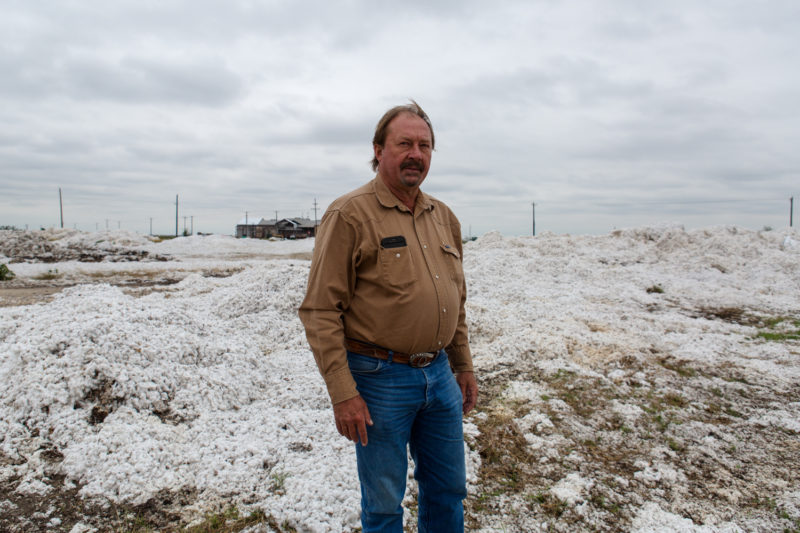
David Wyatt stands in a field of cotton scattered by the hurricane’s wind. They are still trying to salvage what they can, but lost about $5 million at their gin alone.
BAYSIDE—The effects of Hurricane Harvey are still all too evident in this town 30 miles northeast of Corpus Christi. Piles of debris sit in front of homes and businesses, the rafters of buildings show where winds skinned off roofs and, just north of town, a mass of rotting cotton covers the fields around Bayside Richardson Co-Op like snow.
“This was going to be the biggest crop we’d ever ginned,” said David Wyatt, who has managed the co-operative for 26 years. “We already had it harvested, and we usually feel pretty safe when we get it in a module. But it didn’t work out that way.”
Instead, when Hurricane Harvey barreled into the Texas coast in late August, the high winds shredded the modules — rectangular, condensed masses of harvested cotton — stored in Bayside Richardson’s gin yard. Of the 729 conventional modules in the yard, only three were intact after the storm passed.
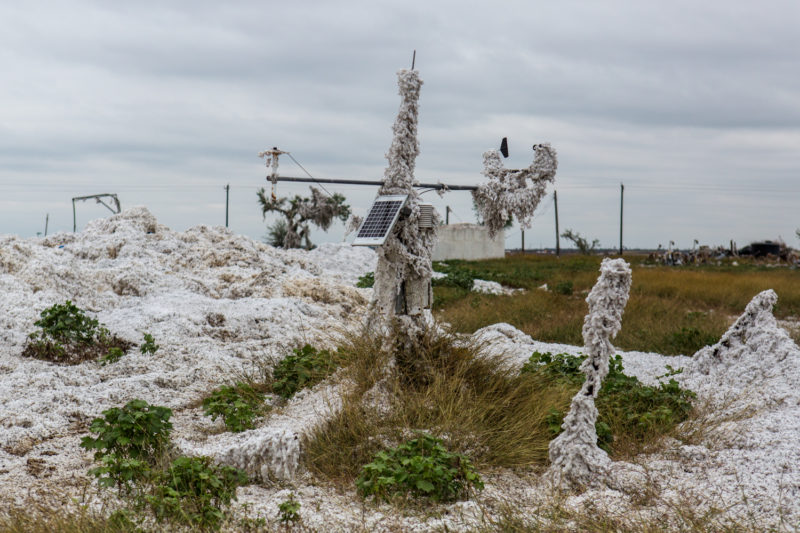
An A&M Extension Service weather station that was covered with cotton during Hurricane Harvey.
Texas’ Coastal Bend, which includes Bayside’s Refugio County, is the second highest-producing cotton region in the state after the High Plains of west and northwest Texas. In 2017, the area was expected to produce 2 million bales — a standard measurement for harvested cotton, weighing 500 pounds each — or about 22 percent of the state’s total. That crop was widely expected to be one of the best in recent memory in both quantity and quality.
“Everybody was making good cotton,” said Bobby McCool, a Texas A&M AgriLife Extension Service agent in San Patricio County. He added, “1.75 or 1.8 bales per acre is the average, and we anticipated 2.35 this year. Numbers may end up showing it was more like 2.6 or 2.7. It was a phenomenal year.”
But instead of selling all that cotton at a profit, the region lost about 200,000 bales outright to Harvey, and another 200,000 were seriously damaged. AgriLife estimates the total damage to the region’s cotton industry at $100 million, and crop insurance adjusters still are settling claims. Experts say the settlements won’t cover all the losses.
“Quality cotton this year could have been contracted out at about 70 cents a pound, which is a pretty good price,” said John Robinson, an agricultural economist with Texas A&M University. But insurance companies, which determine their payout rates according to multiyear averages, likely will pay only about 63 cents a pound, and even then only for cotton that was deemed a total loss.
For the 200,000 bales that were badly damaged but not destroyed in the storm, the financial loss will be even steeper. Insurance adjusters usually refuse to cover ginnable cotton as a total loss, which means farmers must still process that cotton and sell it at a lower price.
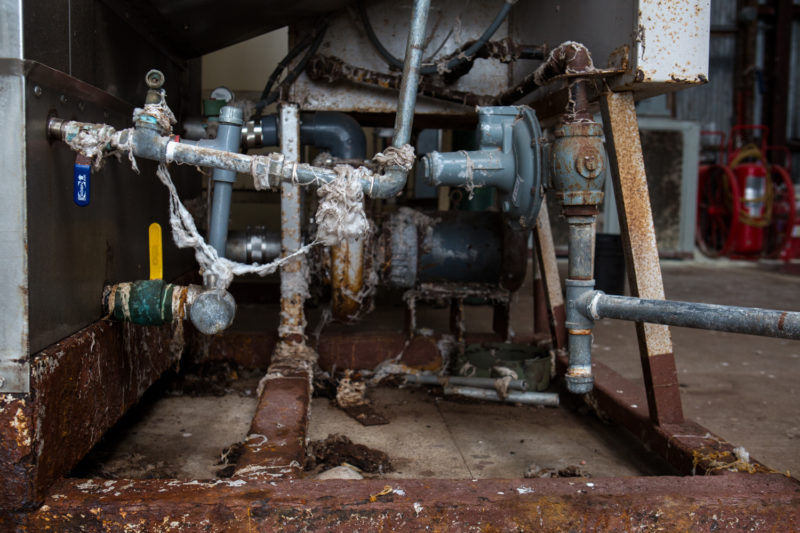
Remnants of cotton blown in from the hurricane still hang on the pipes of the gin’s machinery. The cotton gin won’t be back in full working order until the end of the year.
“Growers are really taking it on the chin,” Robinson said. “This is a mostly unmitigated disaster, and insurance adjustment won’t balance the total loss.”
That loss follows years of low prices and market fluctuations, intensifying the hurricane’s effects on coastal growers.
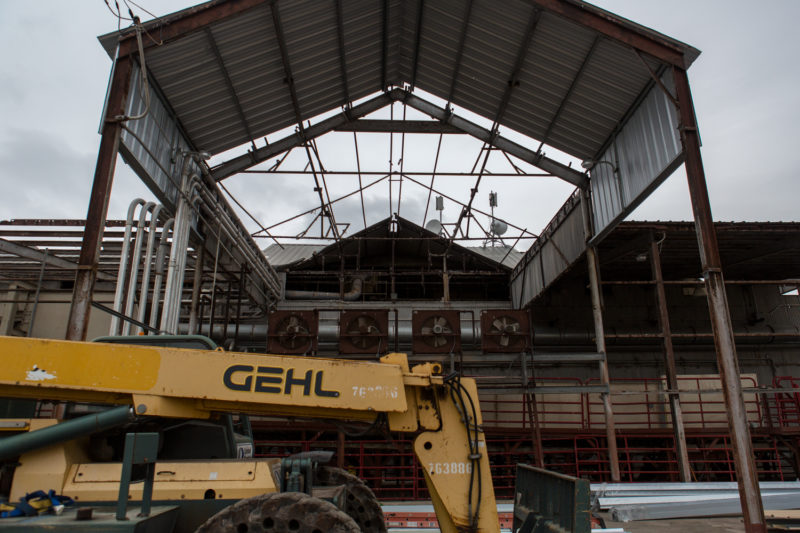
The cotton gin in Bayside suffered a lot of wind damage, with roof panels and doors blown off, but there was no major damage to the machinery inside
“The entire cotton industry has been struggling the last two years. There have been trade issues, prices have been low, and this was one crop where you could make up for that on yield alone,” said Gene Hall, communications director for the Texas Farm Bureau. “For many farmers, this may have been the difference between whether they could stay in business or not.”
Even in the best of years, cotton is a heavily leveraged agricultural industry. Farmers regularly take out loans to cover operating costs, then repay the loans at the end of the year. But in years when prices are too low to cover farmers’ costs, the loans can carry over. Given enough hard years and enough rollover, banks may begin to foreclose on loans or refuse to make new ones, forcing farmers out of business.
In recent years, recouping operating costs has become more difficult across agricultural commodities due to a sharp decline in prices, Robinson said. After years at unsustainable highs, futures prices dropped in May 2014 and have yet to fully recover, but Robinson said 2017’s cotton prices were the best the industry has seen since that initial dip.
“This year’s crop was the kind of thing that would have let farmers pay off all the previous years of carryover debt, save a little, make a little. It was supposed to be that. But that’s farming — it’s very risky,” Robinson said.
While farmers and insurance adjusters finish sorting out what’s left of the region’s cotton this year, and what to do with the ruined crop rotting in the fields, many are looking forward to the next. Asked if Coastal Bend farmers will replant in 2018, Hall said the key factor is whether farmers would have the resources to continue. “Some of them will, no doubt,” he said, but warned the region probably won’t look the same for several years.
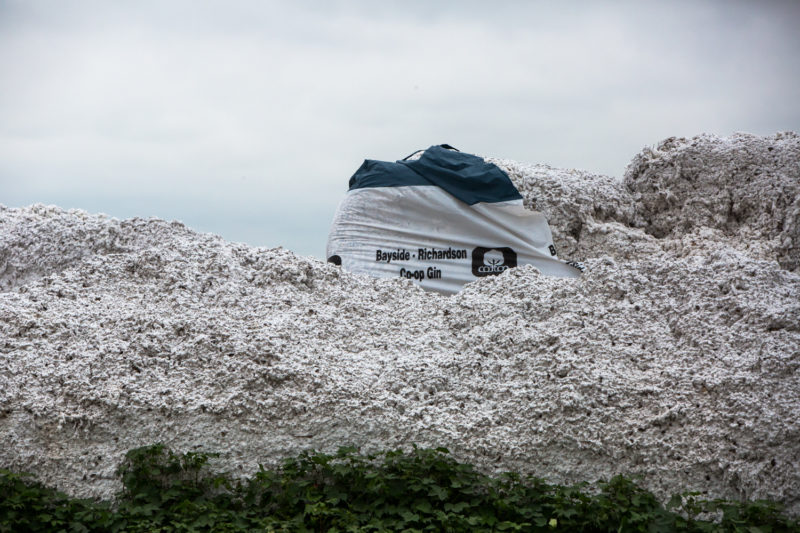
A destroyed module at the Bayside-Richardson gin yard.
Agricultural economist Robinson expects the opposite — an increase in cotton acreage in the Coastal Bend because “even with the risk, cotton is a better gamble compared to growing a grain crop” due to cotton’s higher futures prices.
“There’s likely to be an upward bump in cotton acres, trying to make up for what happened this year and hoping that we’ll have a good crop next year,” Robinson said. “The irony is that that’s what growers were hoping to happen this year.”
While the exact future of Texas’ coastal cotton growers may be uncertain, Gene Wyatt, the gin manager at the Bayside co-op, said he knows exactly where he’ll be next harvest.
“We definitely plan to reopen next year,” Wyatt said. “I’ve been managing gins since 1991. I think I’ll stay.”